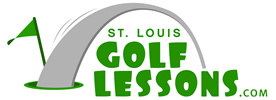I was giving a lesson this past Saturday at Big Bend Golf Center to a long time student named Paul. Paul has reconstructed his swing over the past 3 years. He has gone from a huge reverse pivot, an overswing and an over the top downswing to a nice, on-plane, compact swing. Our challenge this year is to get Paul to use his core and turn through the shot. While getting a nice tight coil on his back swing, he doesn’t unwind completely coming into the ball.
While watching the World Match Play Championship yesterday my conviction about the biggest difference between tour player swings and amateur swings was further reinforced. The difference is impact position and this is influenced by whether or not they use their core properly. Swing after swing came across the screen in slow motion, highlighting the amount of core rotation tour players use coming into the shot. They seem to just rip their hips and core to the target at super high speed. So the question comes to mind…”why do the majority of amateurs slow their core coming into the ball and come to impact with their hips square to the target line as opposed to open?”
I believe the answer is 3-fold.
While watching the World Match Play Championship yesterday my conviction about the biggest difference between tour player swings and amateur swings was further reinforced. The difference is impact position and this is influenced by whether or not they use their core properly. Swing after swing came across the screen in slow motion, highlighting the amount of core rotation tour players use coming into the shot. They seem to just rip their hips and core to the target at super high speed. So the question comes to mind…”why do the majority of amateurs slow their core coming into the ball and come to impact with their hips square to the target line as opposed to open?”
I believe the answer is 3-fold.
- 1) Lack of strength in the legs and core
- 2) Lack of flexibility
- 3) Poor sequence




